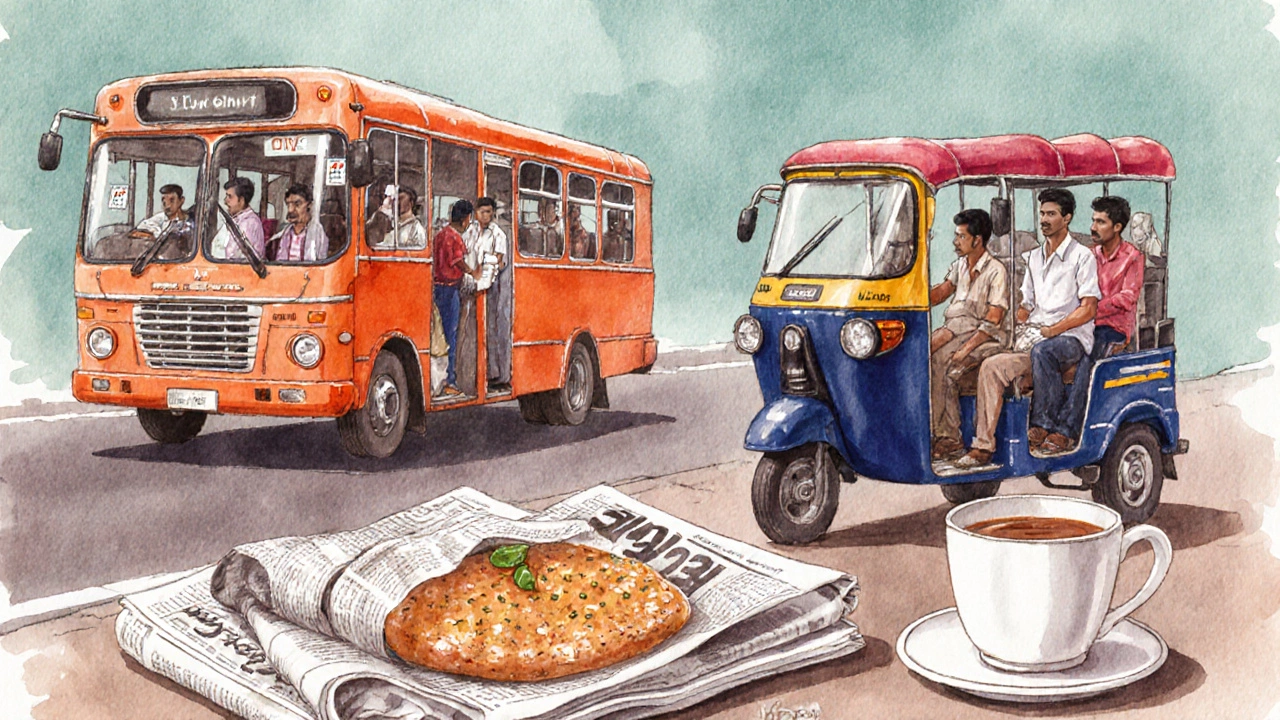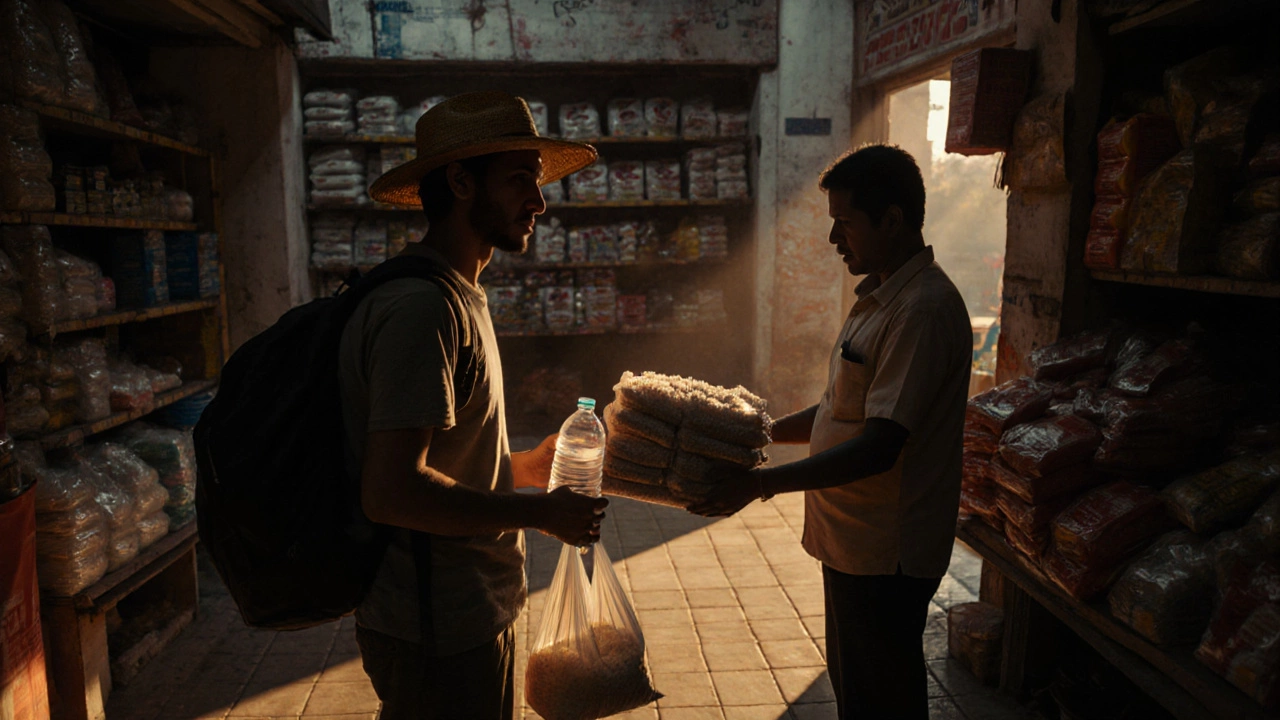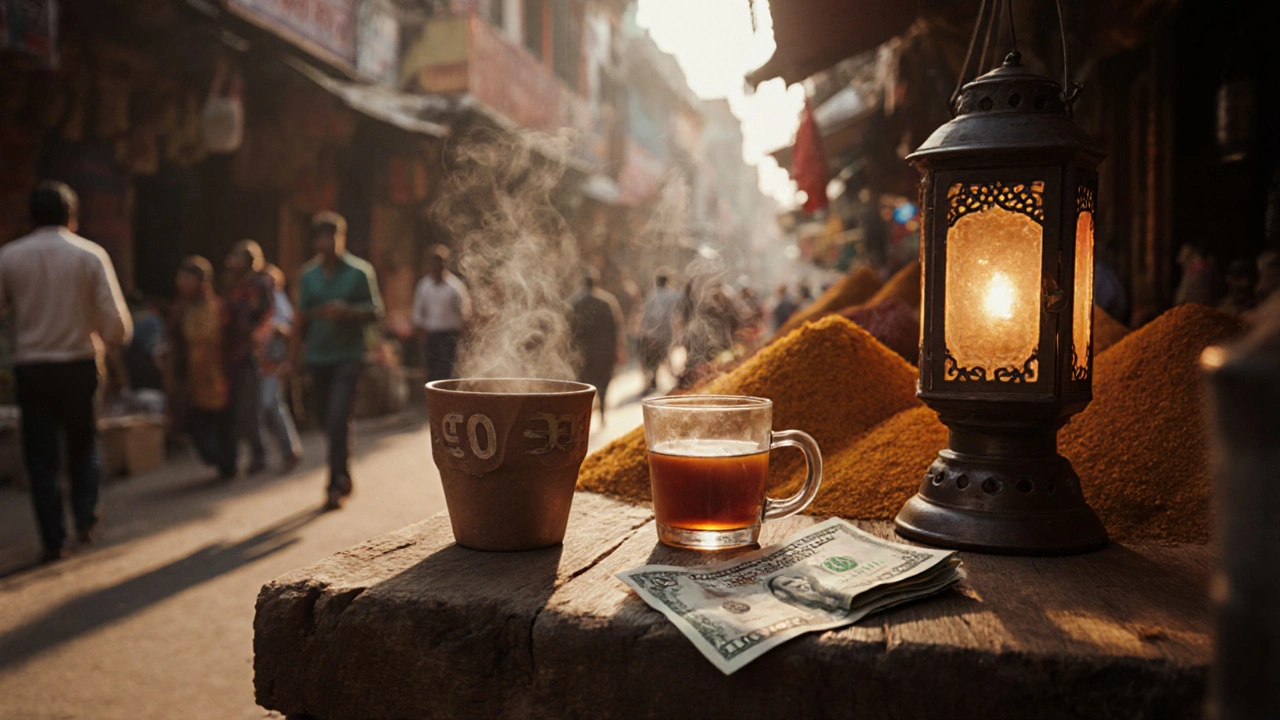$1 Budget Calculator for India
Your Budget
What You Can Buy
Enter your budget amount and click "Calculate What You Can Buy"
Select region for price variations
How This Works
Based on the current exchange rate of 1 USD = ₹83 (as of October 2025), your $1 converts to ₹83. This calculator shows what you can buy with your money in different regions of India.
The regional variations are based on the article's research: North India (₹80), South India (₹85), East India (₹82), and West India (₹86) per USD.
Curious how far a single US dollar stretches across India in 2025? Below you’ll see the real‑world prices you’ll hit at street stalls, bus stops, and local shops, plus tips for squeezing the most out of that green bill.
Key Takeaways
- 1USD equals roughly₹83₹ (₹80‑₹86 depending on the provider) in October2025.
- A plain cup of chai, a local bus ride, or a small packet of biscuits can be bought for under $1.
- Urban metros and premium cafés cost more, but you can still find $1 options in every major city.
- Regional price gaps are modest - the south is a touch pricier for street food, while the north offers cheaper snacks.
- Smart combos - pairing a cheap drink with a shared snack - let travellers live on $1 for meals.
Current Exchange Rate (October2025)
At the time of writing, the mid‑market rate sits at USDollar a global reserve currency traded worldwide≈Indian Rupee the official monetary unit of India83.4. Money‑transfer apps like Wise or Revolut often give 82‑84₹ per dollar after fees; bank rates can be a couple of rupees higher.
What $1 Gets You - Everyday Essentials
Below is a quick snapshot of items you can pick up for roughly one US dollar (≈₹83). Prices are averages; actual costs may vary by city, vendor, and season.
| Item | Average Price (₹) | Price in $ (USD) |
|---|---|---|
| Masala chai (small cup) | ₹30 | $0.36 |
| Vada‑pav (street‑side sandwich) | ₹40 | $0.48 |
| Single‑ride city bus ticket | ₹25 | $0.30 |
| 100ml bottled water | ₹15 | $0.18 |
| Local newspaper (daily) | ₹20 | $0.24 |
| 1GB prepaid mobile data | ₹35 | $0.42 |
| Pack of 6 biscuits (generic brand) | ₹45 | $0.54 |
| One‑hour entry to a local museum | ₹70 | $0.84 |

Food & Drink - Stretching That Dollar
Indian street food is legendary for both flavor and price. A masala chai spiced tea brewed with milk and tea leaves costs between ₹20‑₹35 depending on the stall. Pair it with a vada‑pav a potato‑filled fritter sandwiched in a bun and you’re still under $1.
In southern cities like Chennai or Bangalore, a plate of idli (steamed rice cakes) with coconut chutney runs around ₹40‑₹50. In the north, a roll of pav bhaji is similarly priced. Both serve as a filling breakfast or snack.
If you’re craving something sweet, a small portion of jalebi (deep‑fried syrupy spirals) typically costs ₹25‑₹30 - again well within the $1 budget.
Transport - Getting Around for Under a Dollar
City buses dominate the low‑cost transport scene. In Delhi, Mumbai, and Kolkata a single ride is ₹20‑₹25, while in tier‑2 cities like Jaipur or Mysore it drops to ₹15‑₹20. A short auto‑rickshaw (shared) ride of 2‑3km often costs about ₹40, leaving a little change for a snack.
Metro systems in major metros (Delhi Metro, Mumbai Metro) charge ₹20‑₹40 per journey, so a one‑way trip can still be covered by a dollar if you travel during off‑peak hours.
Everyday Services - Small Purchases that Fit $1
Need a quick internet fix? A 1GB prepaid data bundle from providers like Jio or Airtel costs roughly ₹35‑₹40. That’s enough to check email, scroll Instagram, or download a map.
Printing a single‑page document at a local cyber‑café costs about ₹5‑₹10. A basic haircut at a budget parlour in a smaller town runs around ₹80‑₹100 - just a shade above $1, but you can often find a “trim” for ₹70.
For entertainment, a 90‑minute entry to a regional museum or heritage site is generally ₹70‑₹80. A cinema ticket for a matinee in a small‑town multiplex can be purchased for ₹80‑₹90, pushing the $1 limit but still possible with a few rupee change.
Regional Price Variations
While the national average hovers near ₹80 per USD, prices differ by state and city type:
- North India (e.g., Delhi, Lucknow) - street snacks are cheaper; a samosa may cost ₹15‑₹20.
- South India (e.g., Chennai, Hyderabad) - beverages like filter coffee sit at ₹35‑₹40, slightly higher than northern chai.
- East India (e.g., Kolkata) - public transport is among the lowest; a bus ride is just ₹15.
- West India (e.g., Mumbai, Ahmedabad) - metro fares are higher, but you can still grab a pav bhaji for ₹50.
Rural markets often undercut city prices by 10‑20%. If you’re traveling off the beaten path, a simple bowl of dal and rice may cost only ₹30.

Tips to Make Go Further
- Buy from government‑run fair‑price shops (the “Fair Price Shop” network) where staples are subsidised - a kilogram of rice can be as low as ₹30.
- Use shared auto‑rickshaws instead of private ones; they split the fare among 2‑3 passengers.
- Order combo meals (e.g., “tea + samosa”) often marketed as “₹50 combo” - you get two items for the price of one.
- Carry a refillable water bottle and top up at tap‑water stations for just ₹5‑₹10 per litre.
- Look for “student” or “senior” discount cards in museums and cinemas; they typically reduce entry by 20‑30%.
How $1 Stacks Up Against Other Countries
Compared with Southeast Asian neighbours, India offers a tighter $1 budget. In Thailand or Vietnam, $1 buys a simple snack, but transport often costs more than ₹30. In contrast, a $1 subway ride in Tokyo or a coffee in Sydney would be impossible.
This makes India a top pick for ultra‑budget backpackers who want to stretch a tight fund for weeks.
Frequently Asked Questions
What is the exact USD‑to‑INR rate right now?
As of 12October2025, the mid‑market spot rate is about 1USD=₹83.4. Online converters and money‑transfer apps may show a range of ₹82‑₹86 after fees.
Can I buy a full meal for $1 in a city like Delhi?
Yes, especially if you stick to street stalls. A plate of chole bhature or a simple thali (rice, lentils, and a side) can be found for ₹70‑₹80, keeping you under the $1 mark.
Is public transport safe for tourists?
Generally, yes. City buses and metro systems are widely used by locals and visitors alike. Keep your tickets and belongings secure, and avoid rush‑hour crowds if possible.
Where can I find the cheapest bottled water?
Local grocery stalls sell 500ml bottles for ₹10‑₹15. The cheapest option is buying water from refill stations or using a filtered bottle; a litre costs about ₹5‑₹8.
Do prices change dramatically during festivals?
Yes. During major festivals like Diwali or Eid, street food vendors may raise prices by 10‑20% due to higher demand. Plan ahead and stock up on staples if you travel during those periods.
Next Steps for Budget Travelers
1. Check today’s USD‑INR rate on a reliable converter before you exchange money.
2. Carry a mix of cash (small denominations) and a prepaid travel card for flexibility.
3. Map out affordable food streets in the city you’re visiting - most travel forums list “best $1 eats”.
4. Use local transport apps (e.g., Moovit, Namma Metro) to find the cheapest routes.
5. Set a daily $1 budget target, track your spending in a notebook or a simple spreadsheet, and adjust as you discover hidden deals.
With a clear view of the exchange rate and a pocket‑friendly list of items, you’ll see that a single US dollar can unlock a surprisingly rich slice of Indian daily life.
